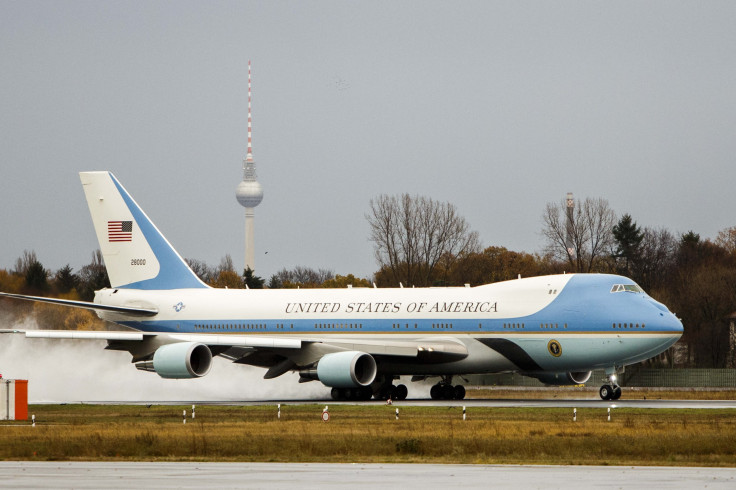How Much Does Air Force One Cost To Make? Donald Trump Tells Boeing To Stop Building New Presidential Plane

UPDATED: 1:38 p.m. EST — The price tag for building Air Force One referenced by Donald Trump does not correlate with the details surrounding the existing deal Boeing has with the government, the White House said Tuesday. The White House was responding in part to a tweet and subsequent comments from the president-elect about how much it costs to build the presidential airplane.
UPDATE: White House says some of Trump's Air Force One statistics don't appear to reflect arrangements between Boeing, Department of Defense
— Reuters Politics (@ReutersPolitics) December 6, 2016
"Some of the statistics that have been cited, shall we say, don't appear to reflect the nature of the financial arrangement between Boeing and the Department of Defense," White House Press Secretary Josh Earnest said during a media briefing Tuesday afternoon.
Trump tweeted Tuesday morning that Boeing should stop building a new Air Force One because it would cost "more than $4 billion." He later seemed to suggest that Boeing was taking advantage of the government.
"Well, the plane is totally out of control. It's going to be over $4 billion for [the] Air Force One program," Trump said to a group of reporters. "And I think it's ridiculous. I think Boeing is doing a little bit of a number. We want Boeing to make a lot of money, but not that much money."
Original story:
President-elect Donald Trump's concern for government expenditures now extends to future officials travels for the commander in chief, even if he's not in the White House. The businessman-turned politician told the company building a new presidential plane to stop production if it would cost more than $4 billion.
Shortly after directing a tweet at Boeing to "Cancel order!" Tuesday morning, Trump briefly spoke to reporters in New York City and said the manufacturing company may be taking advantage of the U.S.
"Well, the plane is totally out of control. It's going to be over $4 billion for [the] Air Force One program," Trump said. "And I think it's ridiculous. I think Boeing is doing a little bit of a number. We want Boeing to make a lot of money, but not that much money."
The new Air Force One 747 was not expected to be completed until after 2023, by which Trump could be in the twilight of or have completed his final term should he be re-elected in 2020.
Presidents have used one version of Air Force One or another to travel domestically and internationally since "the middle of the 20th century," according to the White House. The palatial plane is about 4,000 square feet that includes such amenities as a presidential suite, a conference room and even an operating room should there be a medical emergency.
Those features come at a price — one that Trump's tweet shows he objects to.
Boeing had a deal in place last year to build 747 Air Force One jumbo jets for more than $3 billion, according to one report. The St. Louis-based manufacturers was awarded a contract in January worth $25.8 billion to work on a new fleet of Air Force One planes, but further details of the agreement were never officially released
After Trump's Twitter proclamation Tuesday, Boeing issued a press release to try to clear up the apparent confusion.
"We are currently under contract for $170 million to help determine the capabilities of these complex military aircraft that serve the unique requirements of the President of the United States," the defense manufacturer wrote in a statement. "We look forward to working with the U.S. Air Force on subsequent phases of the program allowing us to deliver the best planes for the President at the best value for the American taxpayer."
Trump's tweet may have been referring to his concerns for taxpayers, as a typical Air Force One flight costs more than $200,000 per hour to operate, CNN reported last summer. Those flights are funded in part by the taxes citizens pay, a fact that was not lost on Trump in July when he was engaged in a bitter battle for the White House with former Secretary of State Hillary Clinton.
The actual cost of building a new Air Force One is about $3.2 billion, according to an estimate from the U.S. Government Accountability Office. That figure included $2 billion for research and development.
© Copyright IBTimes 2024. All rights reserved.












